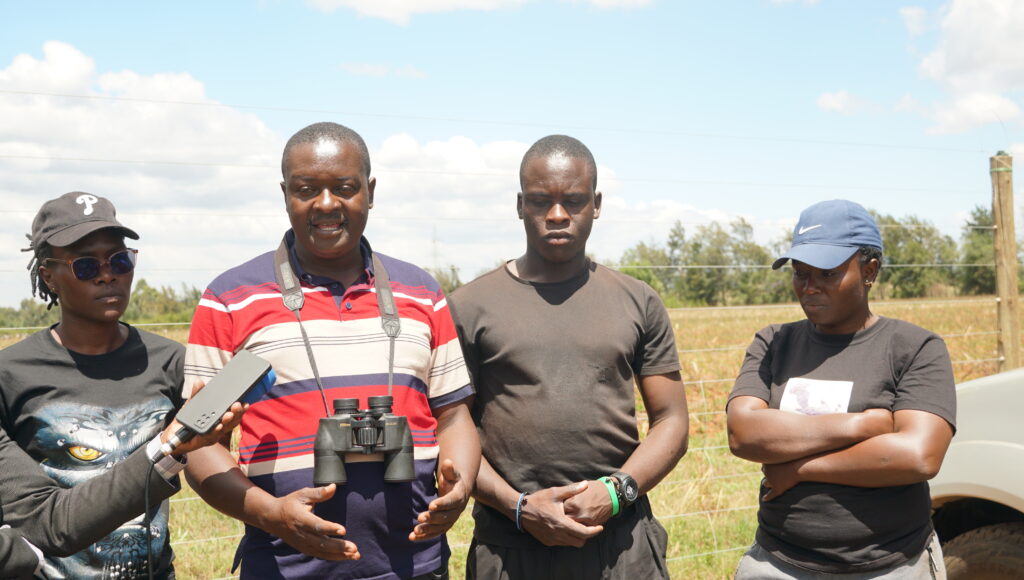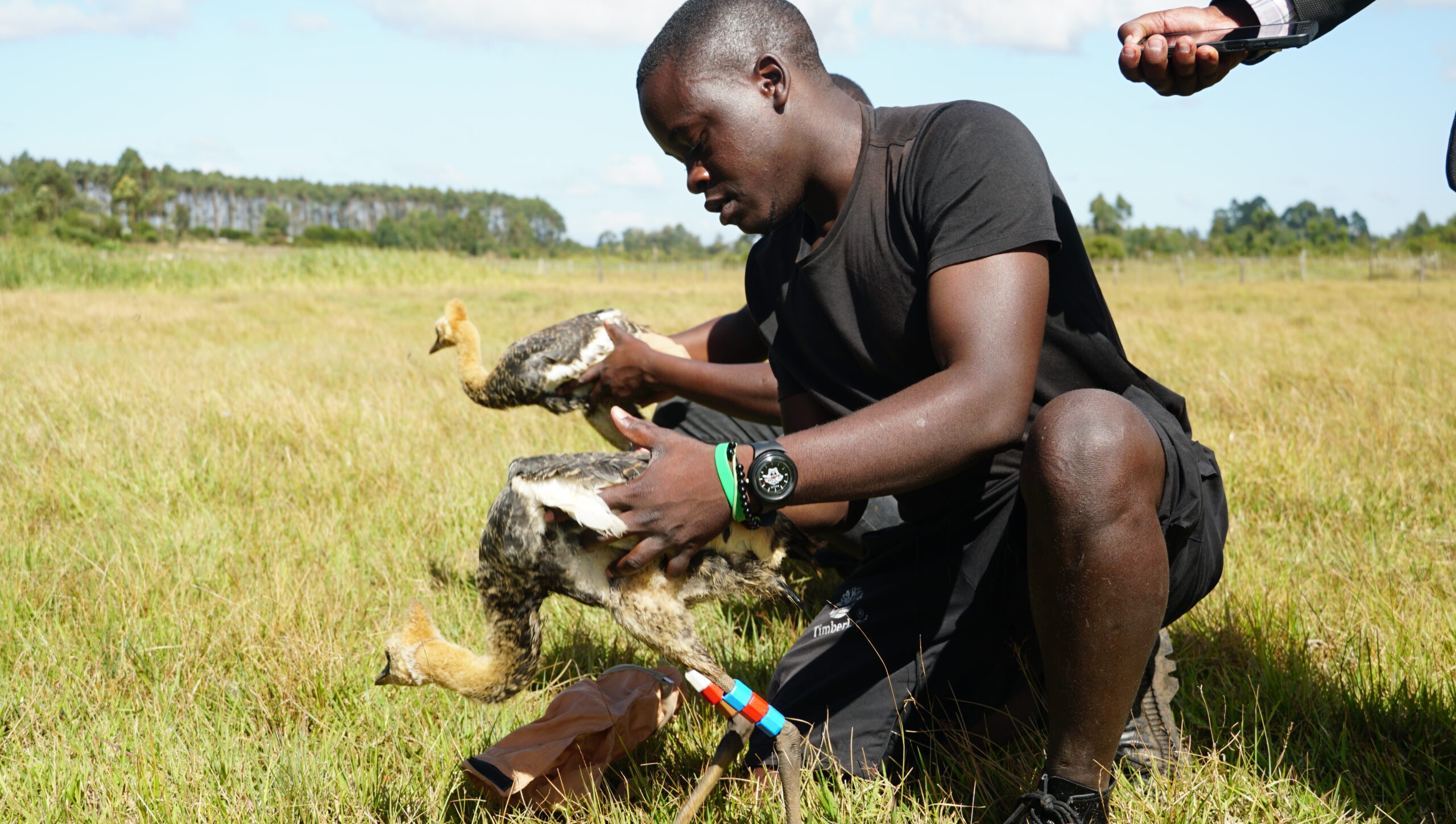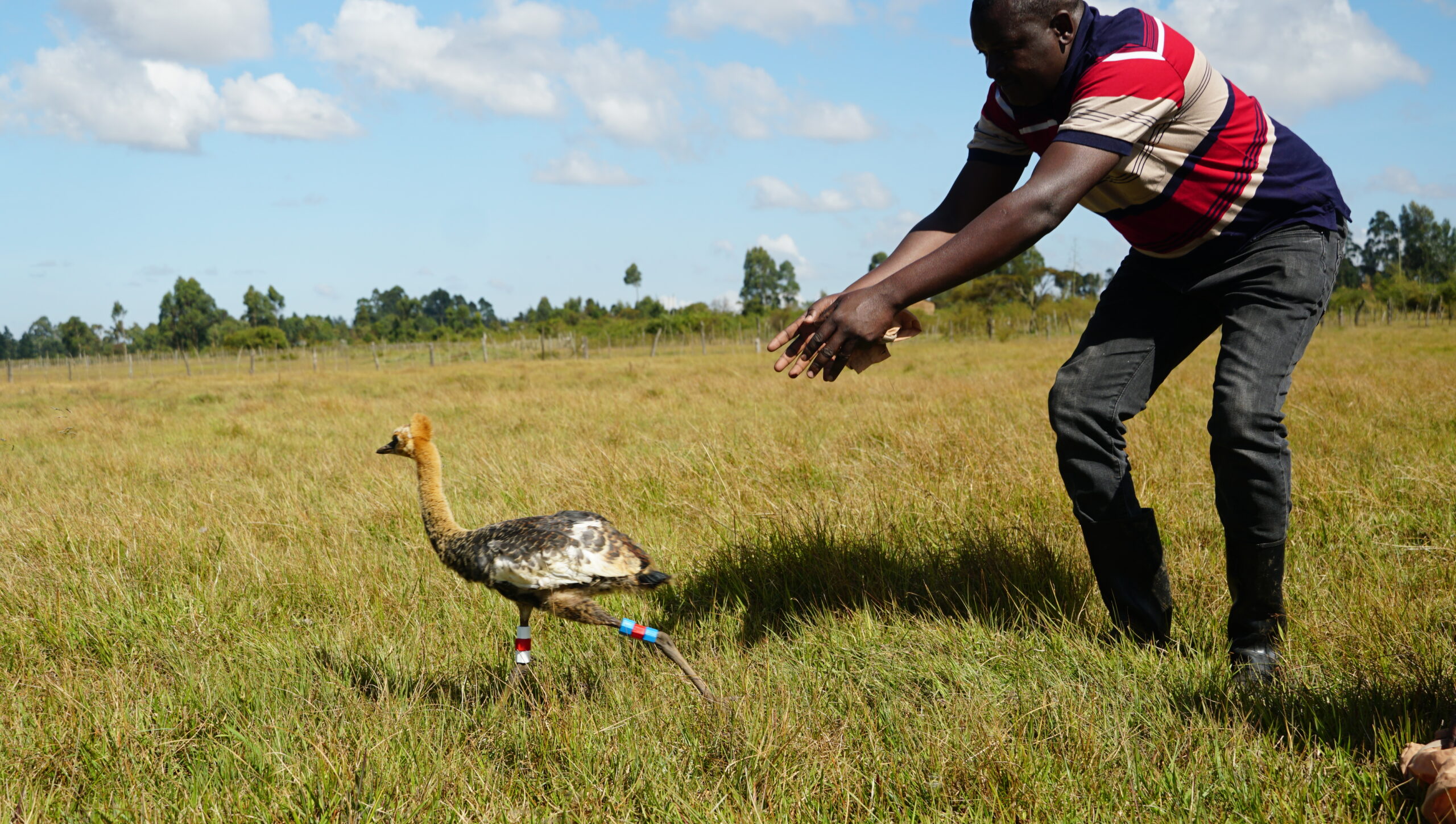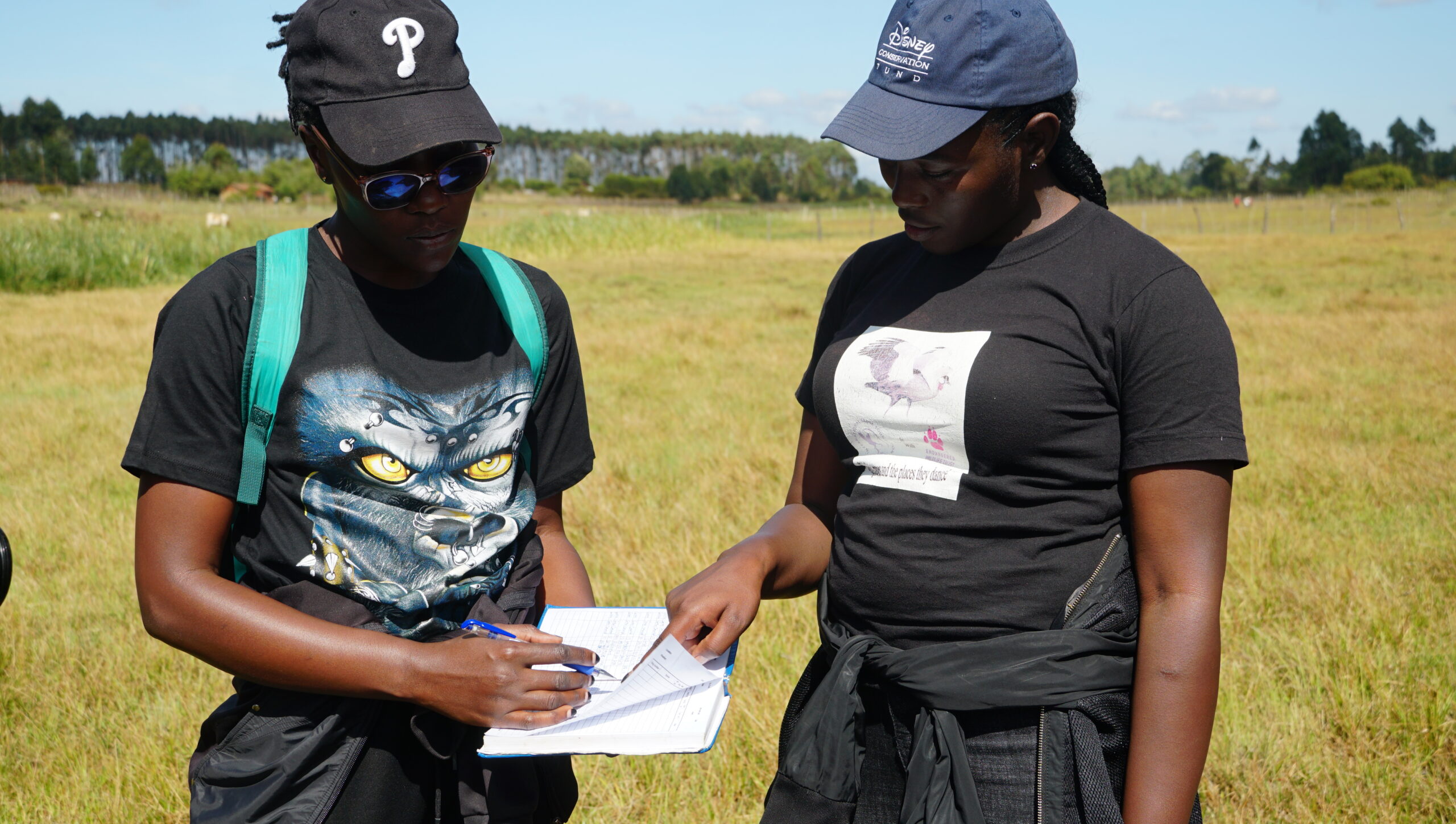Crane Foundation Endangered World Life Trust Conducts Bird Ringing Exercise


International Crane Foundation (ICF) in collaboration with Endangered Wildlife Trust (EWT) and Community Action for Nature Conservation (CANCO) has conducted a bird ringing exercise in UasinGishu County.
The exercise targeted cranes and chicks aged 10-14 weeks old from the region started in May 2022 and is set to end come April 2023.
“Today we are conducting one of our routine activities which is bird ringing. Basically, we are ringing cranes, chicks that are between 10 – 14 weeks old. The process started in May last year and now we are in a new breeding season that started in May and will end come April.” Said Maurice Ogoma, East African Researcher and monitoring specialist.
Ringing is done to the cranes and chicks for various reasons among them monitoring the movement and activities of the birds while also aiding in collecting the bird’s biometrics from the size and the various threats they faced.

“We do ringing to monitor the movement of cranes. We want to know whether they are moving and to what extent. We also want to discover whether the cranes are threatened in a way which would affect their numbers. Ringing also helps us in various research activities like collecting biometrics of the chicks that is size of chicks, length of the head and wings so as to understand the dynamics of the cranes.” Remarked Maurice Ogoma.
With this being an activity that requires proper planning, the field team begins work around May when the breeding session starts. This starts with monitoring the birds and their movements, locating their breeding sites, and watching them for up to 10-14 weeks before ringing can be done.

“When it reaches May, the first activity we do with the team is monitoring the birds, we have to move around with the field team and look at places where breeding is likely to occur mainly in wetland areas. The process starts with cranes nesting, then they lay the eggs, then they hatch the chicks after which we wait for the chicks to reach 10 weeks and that’s when ringing starts because that’s when they are able to hold the rings we use which can either be plastic or metallic rings.” Noted Ogoma.
A worrying trend in the number of crane has been their decline which Ogoma notes has been witnessed around the East African region. This has resulted in crane birds being included in the International Union for Conservation of Nature (IUCN) red list as an endangered species.

“We did the last crane census in Kenya in 2019, which was a national census and we came up with around slightly more than 7000 cranes all over the country. Which to us we feel is quite a low number and there is an 80 percent drop in the data recorded 10-30 years ago. With the numbers reducing not only in Kenya but also other East African countries and that’s why cranes have been classified as an endangered species in the International Union for Conservation of Nature red list.” Added Ogoma.
Like any other living organism, cranes and conservationists also face challenges as a result of the various human activities. Encroachment by farmers into the wetland areas due to changes in climatic conditions, poisoning, and illegal trade has been highlighted as some of the challenges cranes face.
“One of the key challenges faced include agricultural encroachment due to change in climatic conditions affecting breeding, especially in wetland areas because cranes usually breed in wetland areas, incidental poisoning of cranes because of conflict with farmers who perceive cranes feed on grains and shoots of other crops especially after planting, powerline collisions while flying around, they hit the erected powerlines and cables thus affecting them. Lack of awareness and illegal trade has also been some of the challenges being faced by Cranes.” Concluded Maurice adding that we should conserve wetlands for wildlife dependent on wetlands to thrive in the right environment. He also urges the County government not to subdivide land into wetland areas and also implementation of riparian land policies.

Lillian Kitui field officer of the International crane foundation endangered World Life Trust said cranes are important since they bring foreign exchange, and high economic value, they assist in controlling pests such as aphids which consume a lot of harmful pests, they are also used in logos and emblems, has a cultural value in Kalenjin where it’s a token in one of the clans.

“Destruction of wetlands has destroyed breeding space for cranes where they would establish their nest and lay their eggs we should therefore protect our wetlands human activities that include farming and burning of wetlands have contributed to the destruction of the wetlands that are a breeding and feeding sites for the birds,” she said.

“Cranes depend on wetlands to get their feeds where they feed on small animals like frogs and insects but they are changing to eating grains which is a thing that is alarming since most of the habitats which are wetlands are destroyed,” Kitui said.
She says the destruction of wetlands was caused due to the increased population where they want lands for agriculture thus destroying wetlands.





